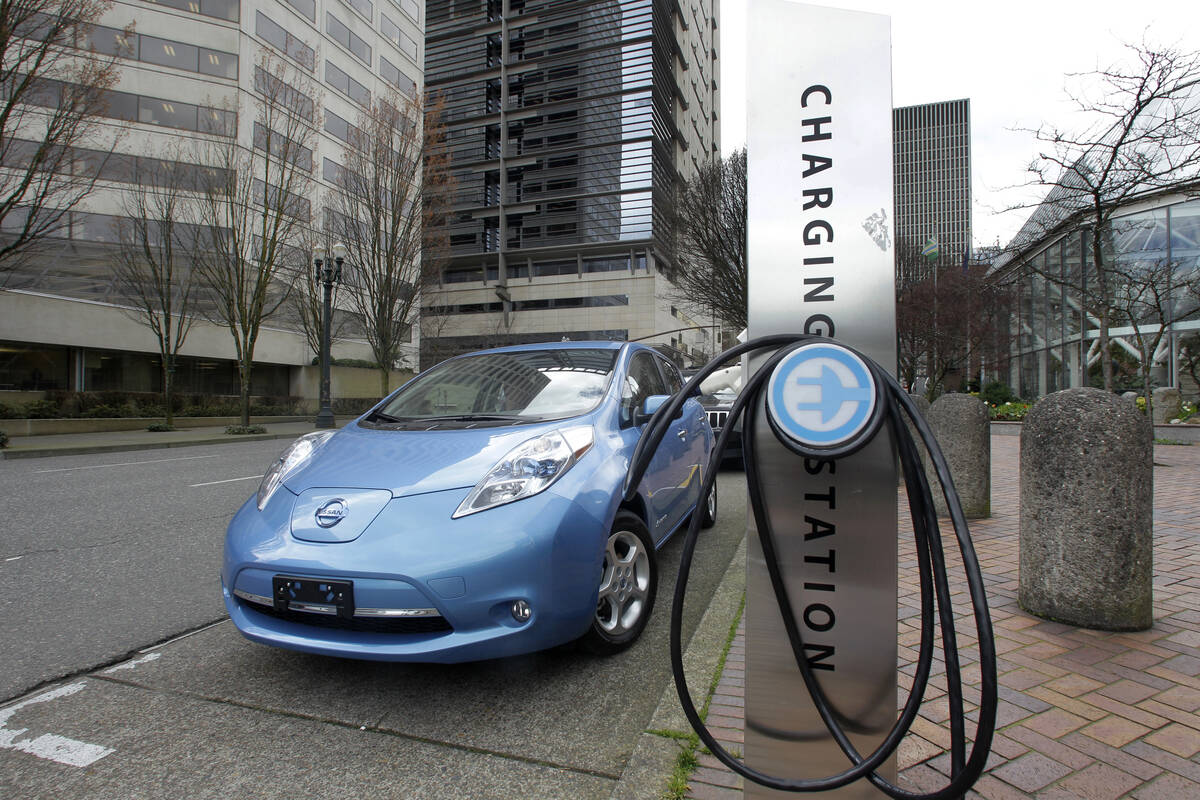COMMENTARY: California’s ban on sales of gas-powered vehicles will hit your driveway
What happens in California doesn’t stay in California — and that’s particularly true when it comes to your car. Or truck. Or even train.
The California Air Resources Board mandates all new passenger vehicles sold in the Golden State must have zero tailpipe emissions by 2035. It did the same with freight trains operating in the state, and it is mandating the retirement of any diesel locomotive more than 23 years old.
Perhaps more problematic for America’s supply chain, California is also trying to force the trucking industry to adopt zero-emissions standards. It’s requiring that commercial vehicles, even heavy-duty big rigs, be zero emission by 2042, and bans the sale of bigger trucks starting in 2036.
That includes over-the-road truckers from New Mexico, North Dakota and New Hampshire that haul freight to and from the Golden State.
“They say, ‘As California goes, so goes the nation,’” said Thomas Pyle, president of the American Energy Alliance. “Let’s hope not. Gov. Gavin Newsom’s attack on gas-powered cars and diesel-powered trucks and trains will be disastrous for California families. Californians already pay more for their electricity than the rest of the nation, and their electricity grid is shaky at best. This fixation to electrify all modes of transportation will make things much worse. The rest of the nation should say, ‘No thanks.’”
Still, after California announced two years ago that it would go down this road, eight other states have followed: Delaware, Maryland, Massachusetts, New Jersey, New York, Oregon, Rhode Island and Washington.
California says outlawing gas-powered vehicles will help solve the climate crisis. To implement the plan, the state will need a waiver from the Environmental Protection Agency under the Clean Air Act.
Industry groups and consumer advocates are lining up their opposition. The Alliance for Automotive Innovation has filed comments with the EPA opposing California’s actions, questioning the feasibility of the mandate.
“In contrast to criteria emission regulations — which can generally be met through emission system designs and are thus generally within the control of automakers in markets throughout the country — compliance with a (zero emissions vehicle) sales mandate requires consumers to choose to purchase the corresponding percentage of new vehicles of a specific type of powertrain,” the group wrote.
“This, in turn, requires adequate electric charging and hydrogen fueling infrastructure, and will likely also require additional supportive policies such as purchase incentives and consumer education to encourage rapid increases in market uptake. Infrastructure and supportive policies are largely beyond the direct, sole control of automakers, and they vary remarkably between states.”
If California believes its standards are going to send EV sales soaring, it needs to check its math.
According to Kelley Blue Book, Americans bought 268,000 electric vehicles in the first quarter of 2024. That’s a small slice of the 3.8 million cars sold in the United States over that period. To put the number in perspective, that’s about half the first-quarter total car sales by Toyota alone.
And that 268,000 is a 7.3 percent drop from the final quarter of 2023.
Coco Zhang, an analyst with ING, recently told CNN the EV market isn’t slowing — it’s entering a new phase.
“The consumers who could be potentially interested in buying one in the first place, they are more likely to have already bought an EV themselves,” Zhang said. “So now, the challenge comes to unlocking the second wave of consumer adoption in those advanced economies.”
Under California’s mandate, 35 percent of new cars sold by 2026 must be fully electric, plug-in hybrid electric, or hydrogen fuel cell. That will increase to 68 percent by 2030 and 100 percent by 2035. The rule is expected to cost more than $210 billion.
The odds that California will hit that 35 percent target in just two years are fading. Plug-in electric vehicles still represent fewer than 5 percent of the cars on the road in the Golden State, and sales of zero-emissions vehicles were flat in the first three months of this year, the auto industry reports.
“The main issue, for now, is the slowing growth rate, which indicates that 2024 might be mostly flat despite new model launches, multiple EV price cuts, and very attractive lease deals,” according to InsideEVs.
California Air Resources Board “has an ideological commitment to reducing emissions from transportation,” said Diana Furchtgott-Roth, the director of the Heritage Foundation’s Center for Energy, Climate, and Environment. “They particularly don’t seem to like personal mobility, where people can go around anywhere they want in whatever kind of vehicle they want. So, they say people are just going to have to get used to electric vehicles, whether they like them or not, and go where the charging stations are. This seems to be an ideological, semi-religious, cultish viewpoint.”
Jessica Towhey writes on education and energy policy for InsideSources.com.






















